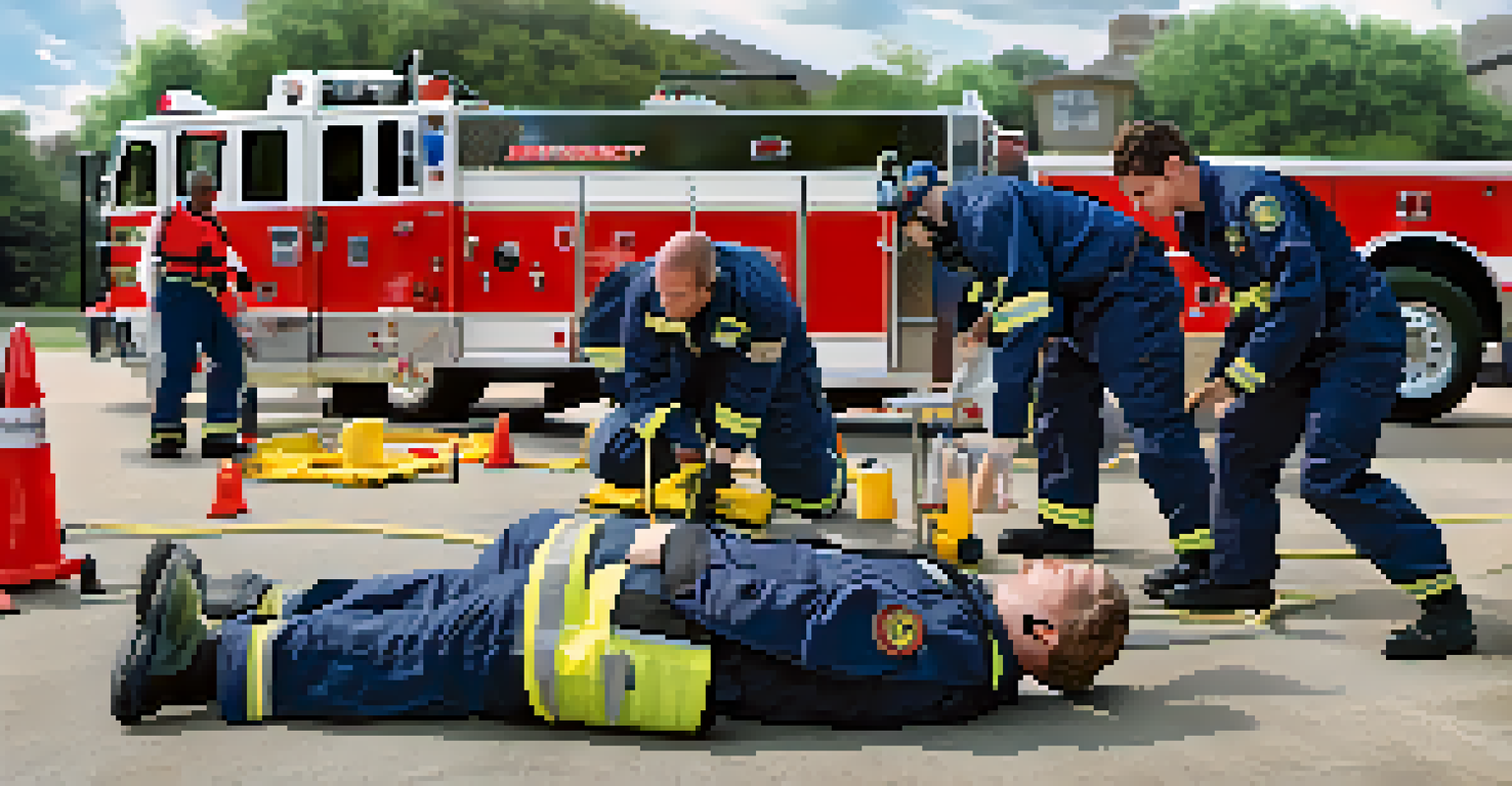The Role of Local Government in Houston's Disaster Planning

Understanding Houston's Unique Geographic Challenges
Houston's geography presents unique challenges for disaster management, including its susceptibility to hurricanes, flooding, and extreme weather events. The city's flat terrain and proximity to the Gulf of Mexico amplify the risks associated with heavy rainfall and storm surges. As a result, local government must stay ahead of these challenges to ensure the safety of its residents.
An ounce of prevention is worth a pound of cure.
Moreover, Houston's rapid urbanization adds another layer of complexity to disaster planning. With more people and infrastructure, the local government must continually assess how best to manage resources and respond effectively to emergencies. This dynamic nature of the city requires a proactive and adaptable approach to disaster preparedness.
To tackle these challenges, the local government collaborates with various agencies and organizations. Through these partnerships, they create comprehensive plans that address the specific needs of Houston's diverse communities, ensuring inclusive and effective disaster management strategies.
The Importance of Community Engagement in Disaster Planning
Community engagement is crucial in Houston's disaster planning efforts. By involving residents in the planning process, local government can better understand the unique needs and concerns of each neighborhood. This grassroots approach not only fosters trust but also empowers residents to take an active role in their own safety.

Local government initiatives often include town hall meetings, workshops, and social media campaigns that encourage citizen participation. These platforms allow residents to voice their opinions and share their experiences, helping officials make informed decisions. By listening to the community, planners can devise tailored strategies that resonate with the people they serve.
Houston's Unique Disaster Challenges
Houston's flat terrain and rapid urbanization heighten its vulnerability to hurricanes and flooding, necessitating effective disaster management strategies.
Furthermore, effective communication during a disaster is vital. Local government invests in outreach programs that educate citizens on emergency procedures and preparedness measures. This proactive approach ensures that residents are well-equipped to respond in times of crisis, ultimately saving lives and reducing the impact of disasters.
Developing Comprehensive Emergency Response Plans
Houston's local government plays a key role in developing comprehensive emergency response plans. These plans outline clear protocols for various types of disasters, ensuring that officials know how to respond quickly and efficiently. This systematic approach minimizes confusion and helps coordinate resources effectively during a crisis.
The best way to predict the future is to create it.
In addition to outlining response strategies, these plans also incorporate recovery efforts. The local government recognizes that the aftermath of a disaster can be just as challenging as the event itself. By addressing recovery in their emergency plans, they ensure that resources are allocated for rebuilding and support services.
Moreover, these plans are regularly updated to reflect changing circumstances and lessons learned from previous disasters. This iterative process allows Houston's local government to remain agile and responsive, adapting to new challenges while continuously improving their disaster management strategies.
Collaboration with State and Federal Agencies
Collaboration is a cornerstone of effective disaster planning in Houston. The local government works closely with state and federal agencies to ensure a cohesive response during emergencies. This partnership enhances resource sharing, training, and logistical support, which are vital during large-scale disasters.
For instance, during Hurricane Harvey, the collaboration between local, state, and federal agencies proved crucial in coordinating rescue and relief efforts. By pooling resources and expertise, they were able to respond more effectively to the needs of affected communities. This level of cooperation is essential for maximizing the impact of disaster response initiatives.
Community Engagement is Essential
Involving residents in disaster planning fosters trust and ensures that local government addresses the specific needs of diverse neighborhoods.
Additionally, local government officials actively participate in statewide disaster planning committees. This involvement allows Houston to contribute its unique insights and experiences, helping shape broader policies that benefit all Texas communities. Through these collaborative efforts, they strengthen the overall disaster preparedness framework across the state.
Utilizing Technology for Enhanced Disaster Preparedness
In the digital age, technology plays a pivotal role in Houston's disaster planning efforts. The local government leverages advanced tools to enhance communication, data analysis, and resource management during emergencies. This technological integration streamlines processes and improves overall efficiency.
For example, Houston uses real-time data monitoring systems to track weather patterns and potential hazards. These systems provide crucial information that helps officials make informed decisions regarding evacuations, resource allocation, and safety measures. By harnessing technology, the local government can respond more swiftly to emerging threats.
Moreover, social media platforms are utilized to disseminate important information to residents. By providing timely updates and safety instructions, the local government ensures that citizens remain informed and prepared. This tech-savvy approach not only enhances communication but also fosters a sense of community resilience.
Establishing Training Programs for Emergency Responders
Training programs for emergency responders are vital components of Houston's disaster planning framework. Local government invests in regular training sessions to equip first responders with the skills and knowledge necessary to handle various emergencies. This ongoing education ensures that responders are well-prepared for any situation they may encounter.
These training programs often include simulations and drills that mimic real-life scenarios. By practicing their response in controlled environments, emergency responders can identify areas for improvement and refine their skills. This hands-on approach builds confidence and enhances teamwork among responders, which is essential during high-pressure situations.
Collaboration Enhances Response Efforts
Partnerships with state and federal agencies strengthen Houston's disaster preparedness and improve resource coordination during emergencies.
Furthermore, local government collaborates with community organizations to extend training beyond official responders. By educating volunteers and community members on basic emergency response techniques, they foster a culture of preparedness throughout the city. This collective effort strengthens the overall resilience of Houston's communities in times of crisis.
The Role of Funding in Disaster Planning Initiatives
Funding is a critical aspect of disaster planning in Houston. The local government allocates resources to ensure that comprehensive plans, training programs, and technological advancements can be effectively implemented. Without adequate funding, even the best-laid plans can fall short during a real disaster.
Local government often seeks grants and partnerships with private organizations to supplement its budget for disaster preparedness initiatives. By leveraging these additional resources, they can enhance their capabilities and invest in vital programs that benefit the community. This proactive approach to funding enables them to stay ahead of potential challenges.

Moreover, transparent communication about funding priorities helps build public trust. When residents understand how disaster planning initiatives are financed, they are more likely to support local government efforts. This collaborative mindset fosters a sense of community involvement, ensuring that disaster planning remains a shared responsibility.